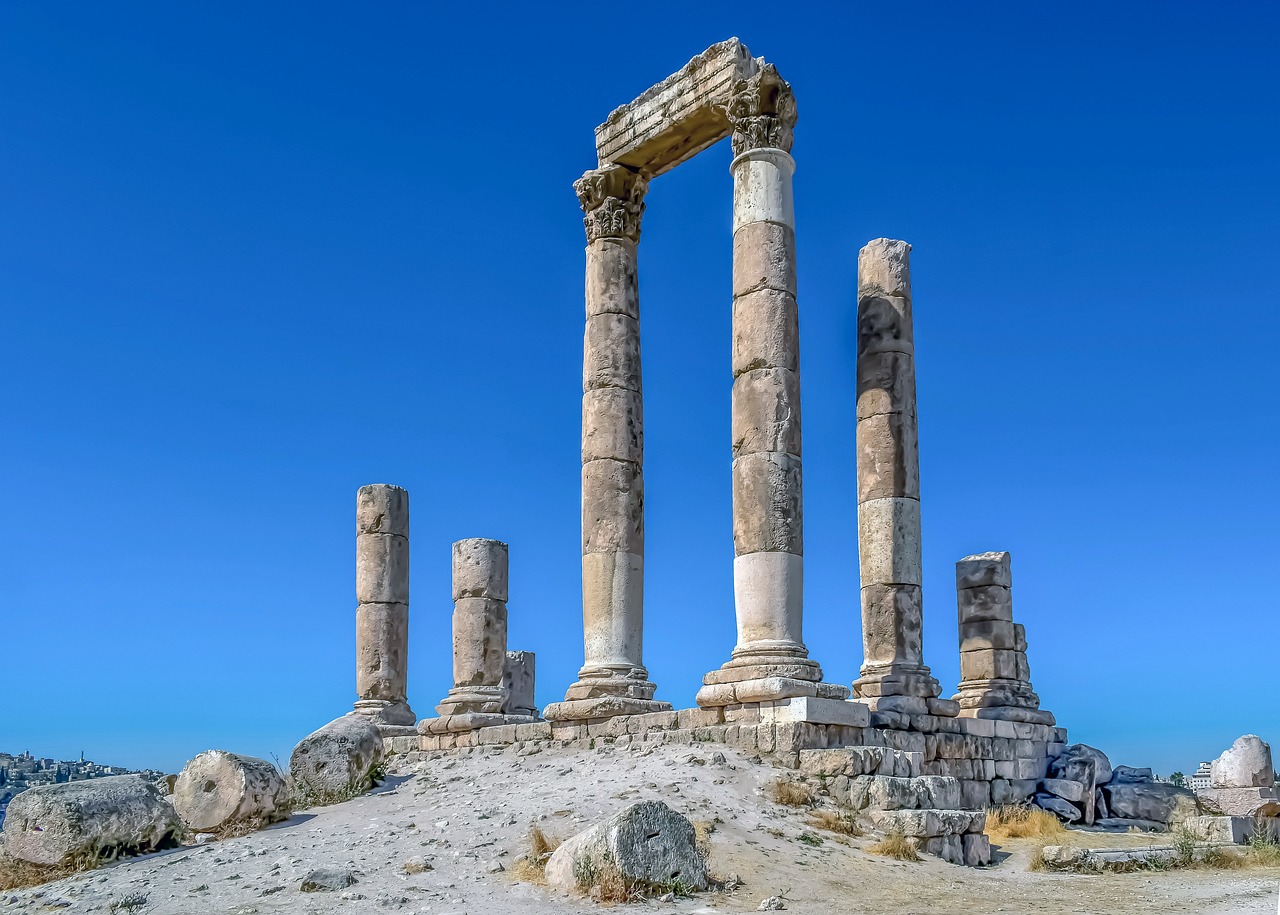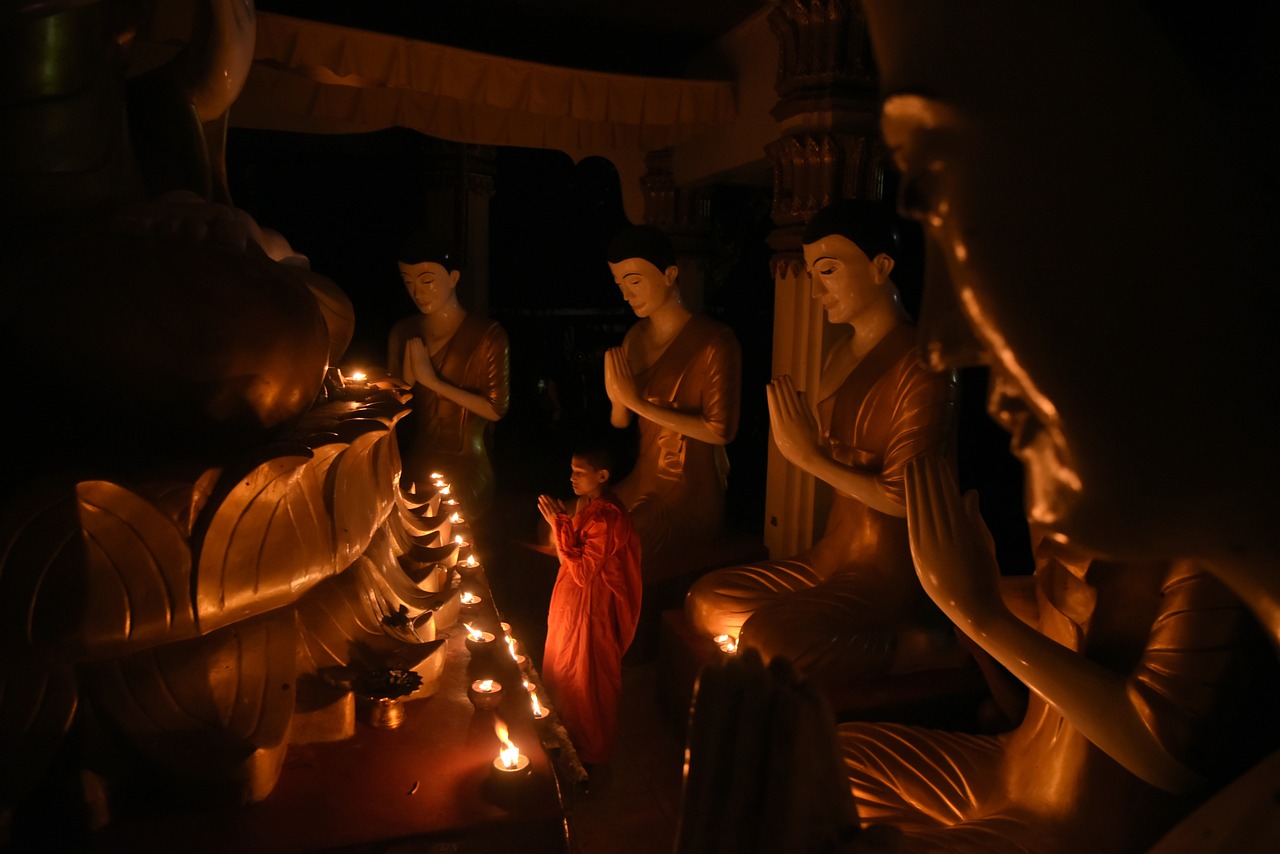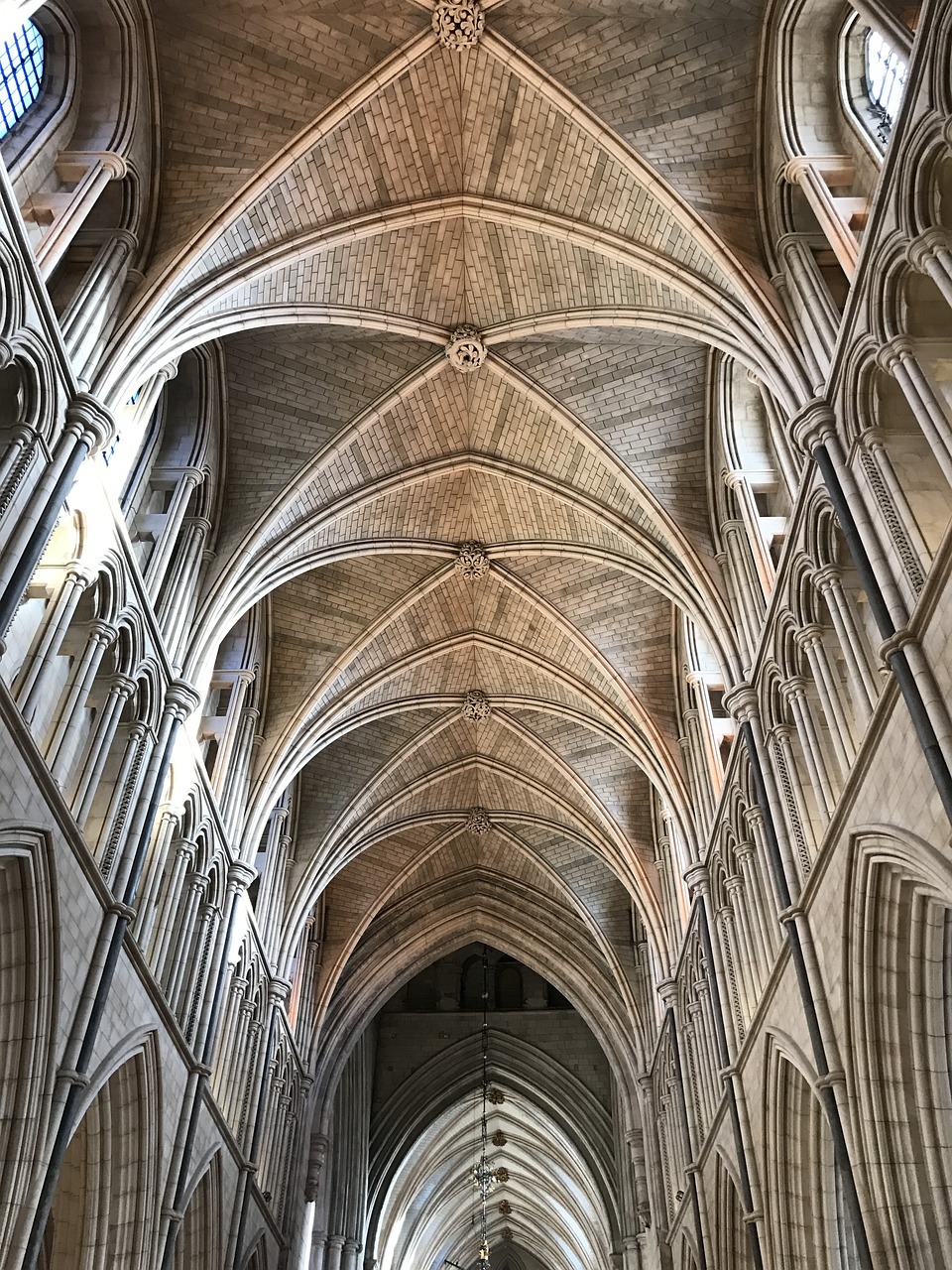The Cultural Exchange of Ancient Asian Empires
The ancient Asian empires flourished not only through conquests and territorial expansions but also through vibrant cultural exchanges that shaped the region's history in profound ways. These empires were interconnected through trade routes, diplomatic relations, and shared ideologies, leading to a rich tapestry of art, architecture, language, religion, and societal norms.
One of the pivotal channels for cultural exchange was the legendary Silk Road trade network, which spanned thousands of miles connecting empires like the Han Dynasty, Roman Empire, and Parthian Empire. This ancient trade route facilitated the exchange of precious commodities such as silk, spices, and other goods, fostering a cross-pollination of ideas and traditions.
Another significant aspect of cultural diffusion was the spread of Buddhism from its origins in India to various parts of East Asia, including China, Korea, and Japan. The influence of Buddhism on art, philosophy, and societal values in these empires was profound, leaving a lasting impact on their cultural landscapes.
The architectural marvels of ancient Asian empires stand as testaments to the cultural exchange and innovation that took place during that era. From the imposing Great Wall of China to the majestic Angkor Wat in Cambodia and the exquisite Taj Mahal in India, these structures reflect a fusion of diverse influences and artistic expressions.
The evolution of writing systems and languages in ancient Asian empires played a crucial role in facilitating communication and cultural exchange. Scripts like Sanskrit, Chinese characters, and Kharosthi not only served as means of recording information but also became vehicles for transmitting ideas and knowledge across borders.
Religious syncretism was another hallmark of cultural exchange in ancient Asian empires, where different belief systems coalesced to form unique hybrid traditions. In China, for example, the amalgamation of Confucianism, Taoism, and Buddhism exemplifies the diverse spiritual landscape shaped by centuries of interaction and mutual influence.
The diplomatic relations and interactions between rulers of ancient Asian empires were instrumental in fostering cultural exchange, forging alliances, and sharing technological advancements. Through royal diplomacy, emperors and kings exchanged gifts, ideas, and expertise, enriching their own societies in the process.
The artistic expressions that emerged from the cultural exchange among ancient Asian empires encompassed a wide array of forms, including sculpture, painting, calligraphy, and music. These art forms reflected shared influences, innovations, and a deep appreciation for beauty and creativity.
The legacy of cultural exchange among ancient Asian empires continues to reverberate in modern times, influencing contemporary art, architecture, cuisine, language, and societal values. The enduring impact of these interactions serves as a testament to the enduring power of cross-cultural fertilization and mutual enrichment.

Silk Road Trade Network
Exploring the rich history and interconnectedness of ancient Asian empires through cultural exchange, trade routes, and diplomatic relations that shaped the region's art, architecture, language, religion, and societal norms.
The Silk Road played a pivotal role in facilitating cultural exchange between various ancient Asian empires. This extensive network of trade routes connected empires such as the Han Dynasty, Roman Empire, and Parthian Empire, enabling the exchange of valuable commodities like silk, spices, and precious goods. The Silk Road was not merely a path for commercial transactions but also a bridge for the transmission of ideas, technologies, and cultural practices.
Imagine caravans traversing vast deserts, carrying exotic goods from distant lands, sparking curiosity and wonder among traders and travelers alike. The Silk Road was a bustling highway of commerce and cultural interaction, where merchants from different empires met, exchanged goods, and shared stories of their homelands. It was a melting pot of languages, traditions, and innovations, fostering a sense of unity amidst diversity.
Through the Silk Road, the Han Dynasty introduced silk to the Roman Empire, captivating the Western world with its luxurious texture and vibrant colors. In return, the Romans offered glassware, gemstones, and gold, creating a symbiotic relationship that transcended geographical boundaries. The Parthian Empire acted as a crucial intermediary, facilitating trade between East and West, further enhancing the cultural exchange along the Silk Road.
The Silk Road was not only a conduit for material goods but also a channel for the exchange of knowledge and ideas. It served as a cultural highway where art, philosophy, and religious beliefs intermingled, giving rise to a tapestry of shared heritage and mutual enrichment. The legacy of the Silk Road endures as a testament to the power of connectivity and collaboration in shaping the history of ancient Asian empires.

Buddhist Spread and Influence
Exploring the rich history and interconnectedness of ancient Asian empires through cultural exchange, trade routes, and diplomatic relations that shaped the region's art, architecture, language, religion, and societal norms.
The impact of the Silk Road on facilitating cultural exchange between empires such as the Han Dynasty, Roman Empire, and Parthian Empire through the trade of silk, spices, and other goods.
During ancient times, Buddhism played a significant role in spreading across Asia, originating in India and reaching distant lands like China, Korea, and Japan. The teachings of Buddha not only influenced religious beliefs but also left a profound impact on art, philosophy, and societal values in various empires. The transmission of Buddhist ideas through trade routes and missionary activities fostered a cultural exchange that transcended borders and languages.
The architectural achievements of ancient Asian empires are a testament to the cultural exchange and innovation that flourished during that era. Iconic structures like the Great Wall of China, Angkor Wat in Cambodia, and the Taj Mahal in India stand as magnificent examples of architectural prowess influenced by diverse cultures and traditions.
The development of writing systems and languages in ancient Asian empires marked a significant milestone in cultural exchange. Scripts like Sanskrit, Chinese characters, and Kharosthi not only served as tools for communication but also became symbols of shared heritage and cross-cultural interactions.
The blending of different religious beliefs and practices in ancient Asian empires showcased a unique form of cultural exchange. In China, the fusion of Confucianism, Taoism, and Buddhism exemplified the harmonious coexistence and integration of diverse spiritual traditions, shaping the religious landscape of the region.
The diplomatic relations and interactions between rulers of ancient Asian empires played a crucial role in fostering cultural exchange and mutual understanding. Through alliances, treaties, and diplomatic missions, emperors and kings facilitated the sharing of technologies, knowledge, and cultural practices, enriching the tapestry of Asian civilizations.
The artistic expressions that emerged from the cultural exchange among ancient Asian empires reflected a rich tapestry of shared influences and innovations. From intricate sculptures to vibrant paintings, elegant calligraphy, and melodious music, the diverse art forms showcased the interconnectedness and creativity of ancient societies.
The lasting legacy of cultural exchange among ancient Asian empires continues to resonate in contemporary times. The influence of art, architecture, cuisine, language, and societal values from the past still shapes the cultural landscape of the region and beyond, highlighting the enduring impact of historical interactions.
Stay tuned for the FAQs section!

Architectural Marvels
When we talk about the architectural marvels of ancient Asian empires, we are transported to a world where grandeur meets innovation, and cultural exchange is etched in stone and mortar. One of the most iconic structures that symbolizes this exchange is the Great Wall of China. Constructed over centuries by various dynasties, this colossal fortification not only served as a defense mechanism but also as a testament to the engineering prowess of the Chinese empires. The Great Wall stands as a physical embodiment of the interconnectedness of empires through trade and diplomacy.
Turning our gaze towards Southeast Asia, we encounter the breathtaking Angkor Wat in Cambodia. This sprawling temple complex, built by the Khmer Empire, is a fusion of Hindu and Buddhist architectural styles, reflecting the religious syncretism prevalent in the region. The intricate carvings, towering spires, and vast courtyards of Angkor Wat showcase the artistic and cultural exchange that took place along the trade routes of ancient Asia.
Traveling to the Indian subcontinent, we encounter the Taj Mahal in India, a mausoleum that stands as a symbol of love and architectural perfection. Commissioned by Mughal Emperor Shah Jahan in memory of his wife, the Taj Mahal blends Persian, Islamic, and Indian architectural elements seamlessly. Its white marble facade, intricate calligraphy, and symmetrical gardens exemplify the beauty and elegance that emerged from the cultural interactions of diverse empires.
Each of these architectural marvels not only showcases the technical expertise of ancient Asian empires but also serves as a visual narrative of the cultural exchange that shaped the region. From the grandeur of imperial palaces to the serenity of religious monuments, these structures stand as testaments to the creativity, innovation, and interconnectedness of ancient civilizations.

Language and Script Development
Exploring the rich history and interconnectedness of ancient Asian empires through cultural exchange, trade routes, and diplomatic relations that shaped the region's art, architecture, language, religion, and societal norms.
The evolution of writing systems and languages in ancient Asian empires played a crucial role in facilitating communication and cultural exchange. Scripts like Sanskrit, Chinese characters, and Kharosthi emerged as innovative tools that influenced the development of language and literature across the region.
In ancient India, the invention of Sanskrit script revolutionized the way knowledge was recorded and shared. This intricate writing system not only preserved religious texts and philosophical treatises but also paved the way for the spread of Indian culture and ideas to neighboring empires.
Similarly, the complexity and beauty of Chinese characters reflected the sophistication of the Chinese civilization. The script's adaptability allowed for the expression of profound philosophical concepts and historical narratives, fostering a sense of unity and identity among diverse ethnic groups.
Moreover, the Kharosthi script, used in the Gandhara region, served as a bridge between the Indian subcontinent and Central Asia. Its unique blend of Brahmi and Aramaic influences facilitated trade and cultural interactions, enabling the transmission of Buddhist scriptures and artistic styles.
Through the development of these writing systems, ancient Asian empires not only enhanced their communication capabilities but also laid the foundation for cross-cultural exchanges that enriched their languages, literature, and intellectual pursuits.

Religious Syncretism
Religious syncretism in ancient Asian empires was a fascinating phenomenon that showcased the blending of different religious beliefs and practices, leading to the creation of unique spiritual traditions. One notable example of this syncretism can be seen in China, where Confucianism, Taoism, and Buddhism coexisted and influenced each other, creating a rich tapestry of philosophical ideas and moral values. The integration of these diverse beliefs not only enriched the spiritual landscape of the region but also promoted tolerance and understanding among different communities.
Moreover, the concept of religious syncretism extended beyond China and permeated other ancient Asian empires, such as the blending of Hinduism and Buddhism in the Indian subcontinent. This fusion of religious ideologies resulted in the creation of new rituals, art forms, and societal norms that reflected the harmonious coexistence of diverse faiths. The syncretic nature of these religious practices highlighted the adaptability and openness of ancient Asian societies towards embracing different spiritual teachings.
Through religious syncretism, ancient Asian empires were able to transcend cultural boundaries and foster a sense of unity among their diverse populations. The exchange of religious ideas not only facilitated peaceful interactions but also laid the foundation for mutual respect and cooperation. This intermingling of beliefs and practices not only shaped the spiritual landscape of the region but also influenced the art, architecture, and social structures of ancient Asian civilizations.

Royal Diplomacy and Interactions
Exploring the rich history and interconnectedness of ancient Asian empires through cultural exchange, trade routes, and diplomatic relations that shaped the region's art, architecture, language, religion, and societal norms.
The impact of the Silk Road on facilitating cultural exchange between empires such as the Han Dynasty, Roman Empire, and Parthian Empire through the trade of silk, spices, and other goods.
The dissemination of Buddhism from India to East Asia, including China, Korea, and Japan, and its influence on art, philosophy, and societal values in various empires.
The architectural achievements of ancient Asian empires, such as the Great Wall of China, Angkor Wat in Cambodia, and the Taj Mahal in India, showcasing cultural exchange and innovation.
The evolution of writing systems and languages in ancient Asian empires, including the invention of scripts like Sanskrit, Chinese characters, and Kharosthi, influencing communication and cultural exchange.
The blending of different religious beliefs and practices in ancient Asian empires, such as the fusion of Confucianism, Taoism, and Buddhism in China, showcasing cultural exchange and diversity.
During ancient times, royal diplomacy played a crucial role in shaping the interactions between emperors, kings, and rulers of various Asian empires. These diplomatic relations often led to cultural exchange, alliances, and the sharing of technologies and knowledge. Emperors and kings engaged in strategic alliances to strengthen their positions, exchange gifts, and negotiate treaties. Through these interactions, empires were able to foster peace, establish trade agreements, and promote cultural understanding.
The diverse art forms and styles that emerged from the cultural exchange between ancient Asian empires, including sculpture, painting, calligraphy, and music, reflecting shared influences and innovations.
The lasting legacy of cultural exchange among ancient Asian empires on contemporary art, architecture, cuisine, language, and societal values in the region and beyond.
Stay tuned for some frequently asked questions about the cultural exchange of ancient Asian empires!

Artistic Expressions
Exploring the rich history and interconnectedness of ancient Asian empires through cultural exchange, trade routes, and diplomatic relations that shaped the region's art, architecture, language, religion, and societal norms.
Artistic expressions in ancient Asian empires were a vivid reflection of the cultural exchange and influences that permeated the region. Through intricate sculptures, mesmerizing paintings, elegant calligraphy, and melodious music, these empires showcased their shared influences and innovative expressions.
One remarkable example of artistic exchange is seen in the blending of styles and techniques in sculpture. The intricate stone carvings of the Khmer Empire at Angkor Wat in Cambodia exhibit a fusion of Hindu and Buddhist iconography, highlighting the syncretism of religious beliefs in the region.
Similarly, painting in ancient Asian empires was not just a form of artistic expression but a medium to convey spiritual and philosophical ideas. The delicate brushwork of Chinese landscape paintings, influenced by Daoist principles of harmony with nature, exemplifies the deep connection between art and philosophy.
Calligraphy, with its graceful strokes and symbolic meanings, became a revered art form in empires like the Tang Dynasty in China. The evolution of writing systems, such as the development of Chinese characters, not only facilitated communication but also served as a unifying cultural symbol across diverse regions.
Music, another integral part of artistic expressions, transcended linguistic barriers and resonated with shared cultural values. From the classical music traditions of ancient India to the court music of the Korean Goryeo Dynasty, musical compositions reflected the cultural diversity and exchanges that characterized ancient Asian empires.
The artistic legacy of these empires continues to inspire contemporary artists and enthusiasts, showcasing the enduring impact of cultural exchange on creative expressions across time and borders.
- How did artistic expressions in ancient Asian empires reflect cultural exchange?
- What role did sculpture, painting, calligraphy, and music play in showcasing shared influences?
- Can you provide examples of artistic syncretism in ancient Asian empires?
- How has the legacy of artistic expressions influenced modern art forms in the region?

Legacy and Modern Influence
As we delve into the legacy of cultural exchange among ancient Asian empires, it becomes evident that their influence continues to resonate in modern times. The intricate tapestry of art, architecture, language, and societal values woven by these empires has left an indelible mark on the region and beyond.
The architectural marvels crafted by these ancient empires stand as testaments to their ingenuity and creativity. From the majestic Great Wall of China, a symbol of strength and unity, to the ethereal beauty of Angkor Wat in Cambodia, each structure reflects a blend of cultural exchange and innovation that continues to awe and inspire visitors today.
Language and script development in ancient Asian empires laid the foundation for communication and cultural exchange. The invention of scripts like Sanskrit, Chinese characters, and Kharosthi not only facilitated written communication but also served as vehicles for the transmission of ideas, literature, and knowledge across borders.
Religious syncretism, the harmonious blending of different faiths, played a pivotal role in shaping the spiritual landscape of ancient Asian empires. The fusion of Confucianism, Taoism, and Buddhism in China exemplifies the richness of cultural exchange, leading to diverse beliefs and practices that continue to influence religious thought and philosophy.
Artistic expressions born from the cultural exchange among ancient Asian empires showcase a fusion of styles and influences. Sculpture, painting, calligraphy, and music reflect shared artistic traditions and innovations that have stood the test of time, inspiring contemporary artists and enthusiasts alike.
The enduring legacy of cultural exchange among ancient Asian empires reverberates in modern society. From the intricate flavors of Asian cuisine to the intricate brush strokes of calligraphy, from the spiritual teachings of ancient philosophies to the grandeur of architectural masterpieces, the impact of these empires continues to shape our world today.

